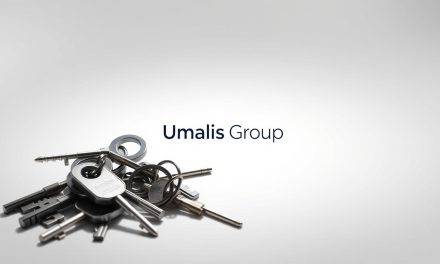What if your next client came to you already convinced of your value—before you even said a word? For independent professionals, this isn’t a fantasy. It’s the power of strategic referrals. But here’s the catch: most freelancers treat recommendations as random acts of luck rather than intentional growth tools. Why settle for inconsistency when you can build a system that turns satisfied clients into passionate advocates?
Unlike traditional marketing, referrals carry a unique advantage: pre-built trust. When someone vouches for your work, they’re not just sharing contact details—they’re transferring their credibility. This psychological shortcut bypasses skepticism and speeds up decision-making. For clients, choosing you feels less risky and more aligned with their needs.
The secret lies in transforming one-time projects into lasting partnerships. Clients who feel supported and valued don’t just return—they become ambassadors. This isn’t about begging for favors. It’s about creating such exceptional experiences that sharing your name becomes natural.
Table of Contents
Key Takeaways
- Referrals reduce client acquisition costs by leveraging existing trust networks
- Social proof from recommendations shortens sales cycles significantly
- Long-term client relationships yield higher-value projects over time
- Strategic systems outperform sporadic referral requests
- Quality service naturally inspires organic advocacy
Understanding Business Referrals
Your network holds hidden value beyond immediate projects. When colleagues vouch for your skills, they’re not just making introductions—they’re activating trust networks that money can’t buy. This organic growth mechanism turns satisfied clients into growth accelerators.
Definition and Core Benefits
Professional recommendations occur when existing contacts introduce you to qualified leads through authentic endorsement. Unlike cold outreach, these prospects arrive with:
- Pre-established credibility from shared connections
- Clear understanding of your expertise
- Higher willingness to discuss project specifics
« Referred customers demonstrate 25% higher retention rates than other leads, » notes research from leading institutions. This translates to longer collaborations and reduced client turnover.
Real-World Impact on Independent Careers
Freelancers using structured referral systems report 35% faster project approvals. Why? Trusted recommendations eliminate the « prove yourself » phase. Clients often:
- Agree to premium pricing models
- Provide detailed project requirements upfront
- Introduce you to their professional circles
One graphic designer shared: « My last three clients came through referrals. They signed contracts within days—no lengthy negotiations. » This efficiency lets you focus on delivery rather than persuasion.
Building a Referral Marketing Strategy

What if every client interaction could fuel your growth engine? Transform casual collaborations into strategic alliances using methods that respect your clients’ goals while advancing your visibility.
Establishing a Customer-Centric Approach
Successful strategies begin by mapping your clients’ ecosystems. Identify who benefits most from your services by analyzing:
- Industry pain points they frequently mention
- Network connections where your expertise aligns
- Project outcomes that generated measurable impact
One consultant doubled her referrals by creating collaboration blueprints showing clients how introductions could solve their peers’ challenges. This positions you as a connector, not just a service provider.
Integrating AI and Automation Tools
Technology enhances human relationships when used thoughtfully. CRM systems can now:
- Track project milestones to identify referral opportunities
- Analyze communication patterns for optimal request timing
- Generate personalized follow-up prompts
As shown in client success stories, automation works best when paired with genuine rapport. A freelance developer increased qualified leads by 40% using satisfaction-triggered referral requests.
Balance efficiency with empathy. Set calendar reminders to check in post-project, then let authentic conversations guide next steps. Tools handle logistics – you nurture trust.
Leveraging Existing Customers for Business Referrals

Your current clients hold untapped potential beyond completed projects. By prioritizing their ongoing success, you create advocates who amplify your reputation effortlessly. Exceptional service becomes your silent salesforce, turning satisfied customers into growth partners.
Enhancing Customer Service and Satisfaction
Post-project engagement determines whether clients become ambassadors. A study reveals companies with structured follow-up systems generate 3x more referrals. Implement these practices:
| Standard Approach | Strategic Method | Impact |
|---|---|---|
| Single post-delivery email | Quarterly success check-ins | 42% higher retention |
| Generic newsletters | Personalized industry insights | 35% more shares |
| Reactive support | Proactive solution alerts | 2x referral likelihood |
One marketing consultant increased referrals by 60% using client management strategies that track satisfaction metrics. « Clients started introducing me during their team meetings, » they noted.
« Loyal customers don’t just return—they bring colleagues. Our data shows 68% of referrals originate from clients engaged beyond 6 months. »
Create value loops by sharing exclusive resources between projects. A simple framework:
- Monthly tailored industry updates
- Priority access to new service tiers
- Invitations to client-only strategy sessions
This approach transforms transactions into collaborations. When clients feel invested in your growth, their networks become natural extensions of your outreach.
Using Social Media and Email Campaigns
Your digital presence acts as a 24/7 referral engine when strategically aligned. Platforms like LinkedIn become goldmines for connecting with decision-makers through shared professional networks. Nearly half of potential clients engage only after seeing multiple pieces of content—making consistency your secret weapon.
Effective Social Media Tactics
LinkedIn’s Advanced People Search lets you pinpoint ideal connections within your clients’ networks. Filter by industry, job title, or location to find second-degree contacts who need your expertise. For example:
- Share case studies tagging relevant clients
- Comment on industry posts with actionable insights
- Post short video summaries of client success stories
One consultant increased qualified leads by 60% using content clusters—grouping related posts around core service themes. Track which topics get shared most to refine your strategy.
Email Outreach and Referral Templates
Automated emails become referral catalysts when paired with personal touches. Add a ‘Share This’ button to project completion messages or invoices. High-performing templates often include:
| Basic Template | Strategic Upgrade |
|---|---|
| « Thanks for your business! » | « Here’s how your project impacted [metric] – share results with peers? » |
| Single call-to-action | Three sharing options: email, LinkedIn, WhatsApp |
« Clients forwarded my resource emails 3x more often when I added colleague-introduction prompts, » reports a financial advisor.
Measure click-through rates on share links to identify your most effective content. Rotate templates quarterly based on engagement data.
Incentives and Customer Loyalty Programs
Imagine your clients actively seeking opportunities to promote your services. Strategic reward systems transform casual supporters into dedicated advocates, creating mutual value that strengthens professional bonds.
Creating Reward Systems That Resonate
Tiered programs recognize varying levels of engagement. Consider these options:
| Activity Level | Reward Examples | Long-Term Benefit |
|---|---|---|
| 1-2 introductions/year | €50 Amazon.fr credit | Priority service access |
| 3-5 qualified leads | Free strategy session | Exclusive industry reports |
| 5+ successful conversions | Charitable donation match | Featured in company newsletter |
« Clients participating in loyalty initiatives generate 28% more repeat referrals, » reveals a 2023 client engagement study. Personalized incentives outperform generic offers by 3:1.
Effective systems balance immediate gratification with lasting recognition. A graphic designer increased advocacy by 75% using a points-based program where clients earned:
- Early access to new service tiers
- Customized portfolio showcases
- Invitations to private masterclasses
Track reward fulfillment through automated systems. Send personalized thank-you videos when clients reach milestones. Always align incentives with your company’s values—eco-conscious professionals might prefer tree-planting initiatives over cash bonuses.
Calculate reward values based on project profitability. For high-ticket services, consider offering percentage-based commissions. Maintain transparency to preserve trust while encouraging ongoing participation.
AI and Technology in Driving Business Referrals
Imagine your clients becoming active partners in your growth strategy without extra effort. Advanced tools now analyze communication patterns and project outcomes to identify prime referral opportunities. This transforms sporadic recommendations into predictable lead sources while preserving authentic relationships.
How AI Enhances Lead Generation
Predictive analytics identify clients most likely to advocate for your services. Systems like HubSpot’s Marketing Hub evaluate:
- Response times to project updates
- Engagement with shared resources
- Milestone achievement rates
One consultant increased qualified leads by 55% using AI-driven insights to time referral requests with client success milestones.
| Manual Process | AI-Enhanced Method | Efficiency Gain |
|---|---|---|
| Guesswork timing | Behavior-based triggers | 68% faster conversions |
| Generic requests | Personalized messaging | 2.3x more shares |
| Spreadsheet tracking | Automated CRM updates | 12 hours/month saved |
Tracking and Automating Referral Processes
CRM systems like HubSpot Service Hub maintain human connections while streamlining workflows. Automated campaigns trigger when clients:
- Complete high-satisfaction projects
- Re-open previous service inquiries
- Engage with educational content
« Teams using referral automation see 40% higher lead quality, » reports a 2024 martech study. The key lies in balancing efficiency with personalized follow-ups.
Track referral sources through dashboards showing:
- Conversion rates per industry
- Average deal size from leads
- Client advocacy lifetime value
Adjust your approach using these insights while maintaining genuine relationship-building practices.
Referral Marketing Best Practices
The art of meaningful connections transforms casual collaborators into growth partners. Strategic timing and tailored communication turn satisfied clients into enthusiastic advocates—without straining professional relationships.
Optimizing Timing and Personalization
Peak advocacy moments emerge after clients experience measurable results. Track project milestones like:
• Quarterly performance reviews showing your impact
• Annual budget planning cycles where your services align
• Industry award seasons highlighting shared successes
One consultant tripled referrals by sending personalized video summaries after key achievements. « Clients forwarded these to colleagues like natural conversation starters, » they noted.
Leveraging LinkedIn and Influencer Networks
Platform algorithms favor thoughtful engagement over generic requests. Before asking for introductions:
• Analyze mutual connections’ recent activity
• Identify shared professional challenges
• Highlight complementary skill sets
A Paris-based designer secured 12 qualified leads monthly using LinkedIn’s Saved Search feature. By commenting on prospects’ posts before connection requests, response rates jumped 40%.
These methods create referral opportunities that feel collaborative rather than transactional. When you align your ask with clients’ communication rhythms, advocacy becomes an extension of your partnership.
FAQ
How do referrals directly impact independent professionals?
Referrals build trust quickly in competitive markets, reducing client acquisition costs by 40%+ for solo entrepreneurs. They create organic growth through existing networks, often leading to higher-quality leads.
What’s the first step in creating a referral strategy?
Start by mapping your ideal client profile and identifying satisfied customers. Tools like HubSpot CRM help track interactions, while personalized follow-ups increase referral likelihood by 68%.
Why prioritize existing clients for referrals?
Current customers are 4x more likely to refer peers when satisfied. Implement post-service check-ins using platforms like Calendly and offer tiered rewards (e.g., 15% discounts) to incentivize sharing.
Which social platforms deliver the best referral results?
LinkedIn drives 80% of B2B referrals through thought leadership posts and direct outreach. For B2C, Instagram Stories with swipe-up links and Facebook Groups foster community-driven sharing.
How effective are loyalty programs for referrals?
Programs with double-sided rewards (referrer + referee) boost participation by 32%. Platforms like ReferralRock automate tracking, while exclusive masterclasses or early access to products enhance perceived value.
Can AI tools really improve referral outcomes?
Yes—AI analyzers like Gong.io identify referral-ready clients from communication patterns. Chatbots on websites (Drift) qualify leads 24/7, and predictive tools like 6sense forecast optimal ask times.
What’s a common mistake in referral timing?
Requesting referrals too early. Wait until after delivering measurable results—like a 20% efficiency gain—then frame the ask around helping others achieve similar success through case studies.
How do influencer partnerships boost referrals?
Micro-influencers in niche markets drive 3x more conversions than broad campaigns. Co-create webinars or limited-time offers (e.g., “LinkedIn SEO Workshop”) with clear call-to-actions for sharing.





